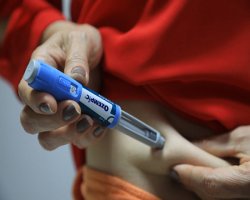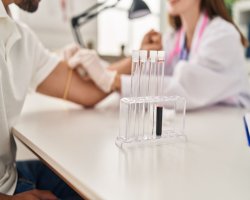Category
How do IVF centers monitor ovulation cycles
By australian_concept
August 6, 2025

Ovulation tracking is a fundamental part of in-vitro fertilization (IVF). IVF center use highly accurate and personalized monitoring systems to ensure eggs are retrieved at the optimal time. Understanding the patient’s ovulation cycle is essential because timing directly impacts the success of fertilization and embryo development.
Understanding the Ovulation Cycle
The ovulation cycle refers to the monthly process where an egg matures and is released from the ovary. In natural cycles, this usually occurs around day 14 of a 28-day cycle. However, every woman’s cycle can vary.
During IVF, ovulation is carefully controlled and stimulated using medications. IVF centers intervene to:
Stimulate the ovaries to produce multiple eggs
Track follicular development
Trigger ovulation at the right time
Prevent premature ovulation
Each step is monitored closely to optimize egg retrieval and improve success rates.
1. Baseline Hormonal Assessment
Before beginning stimulation, IVF centers perform baseline blood tests on day 2 or 3 of the menstrual cycle. These tests evaluate:
FSH (Follicle Stimulating Hormone)
LH (Luteinizing Hormone)
Estradiol (E2)
Anti-Müllerian Hormone (AMH)
These hormone levels help fertility specialists understand the patient’s ovarian reserve, cycle regularity, and readiness for stimulation.
2. Ovarian Ultrasound Monitoring
Transvaginal ultrasounds are a cornerstone in IVF monitoring. These ultrasounds allow IVF doctors to visually track the growth of follicles, which are small sacs within the ovaries where eggs develop.
Frequency: After initiating fertility medications, patients usually have ultrasounds every 2–3 days.
Purpose: To measure follicle size and count. Mature follicles typically reach 18–20mm in diameter before triggering ovulation.
Ultrasound results are used in real-time to adjust medication dosages and ensure follicles develop evenly.
3. Serial Estradiol Testing
As follicles mature, they release estradiol, a form of estrogen. IVF centers conduct regular blood tests to measure estradiol levels during stimulation. Rising estradiol levels confirm that follicles are growing properly.
Low levels may suggest poor follicular response.
Excessively high levels could indicate ovarian hyperstimulation syndrome (OHSS), a potentially dangerous condition.
Monitoring helps doctors tailor medication dosages and determine the best day for egg retrieval.
4. Ovulation Trigger Timing
Once follicles reach the desired size and hormone levels are optimal, the IVF center schedules an ovulation trigger. This is typically done using hCG (human chorionic gonadotropin) or a GnRH agonist injection.
The trigger shot mimics the body’s natural LH surge, prompting final maturation of eggs.
Timing is precise egg retrieval is usually scheduled 34–36 hours after the trigger shot, just before ovulation would naturally occur.
This precise control allows the center to retrieve mature eggs without losing them to natural ovulation.
5. Preventing Premature Ovulation
To prevent the body from ovulating before egg retrieval, IVF centers use GnRH antagonists or agonists during the stimulation phase. These medications suppress the natural LH surge.
This ensures:
Eggs remain in the follicles until scheduled retrieval
The cycle stays on track
Maximum eggs are collected for fertilization
6. Customized Cycle Monitoring
No two women have identical hormone levels or ovulation patterns. That’s why IVF centers use individualized cycle monitoring. Factors like age, AMH levels, past responses to stimulation, and underlying fertility issues help design a personalized monitoring protocol.
Frequent testing allows doctors to:
Adjust medication doses in real time
Avoid complications
Improve fertilization chances
7. Monitoring in Frozen vs. Fresh Cycles
In fresh IVF cycles, monitoring is more intensive as egg retrieval and embryo transfer happen in the same cycle. In frozen embryo transfer (FET) cycles, the center monitors natural or medicated ovulation to prepare the uterus for transfer.
For natural cycles:
LH surge is tracked with blood or urine tests
Ultrasounds confirm ovulation and endometrial thickness
For medicated cycles:
Estrogen and progesterone are used to mimic natural cycles
Endometrial lining is assessed via ultrasound
Conclusion:
Monitoring the ovulation cycle is a vital step in IVF. Fertility experts rely on a combination of hormonal testing, ultrasound imaging, and medication protocols to precisely control ovulation. This ensures eggs are retrieved at the right time and that the uterine environment is ideal for implantation.
For More Details: https://acimc.org/










